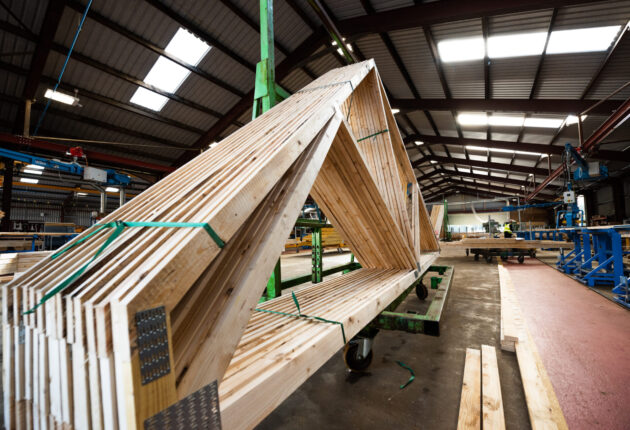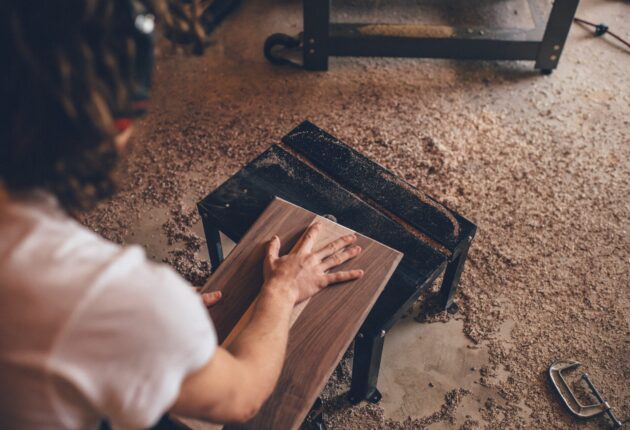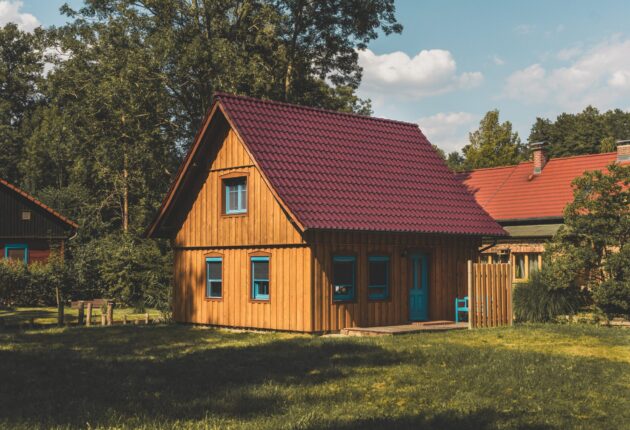Becoming A Health And Safety Champion

As a manufacturer of roof trusses and engineered timber solutions, good health and safety practices are absolutely fundamental. There’s nothing more important than ensuring that we keep our colleagues and customers safe. In fact, one of the many benefits of using modern methods of construction or off-site manufacturing is that they can significantly reduce the number of accidents on site.
To achieve and maintain our high standards, we have a huge range of policies and procedures in place. We work hard to ensure these important health and safety measures are shared and understood by all members of the team. One colleague who’s busy banging the health and safety drum is Kevin Napier, Production Administrator at our Inverness site. He recently became an Environment Health and Safety Champion, so we spoke to him about what he’s learnt and the importance of health and safety on the shop floor.
Q. What did the training involve?
A. The training focussed on human behaviour and understanding why people may behave in certain ways, both in and out of work situations. It also looked into ways an EHS champion can understand our own personal influencing skills, and how we can use certain methods and ways to try and influence other people’s behaviours.
We explored how we can improve our communication skills with colleagues to ensure that when dealing with unsafe behaviours, we approach each situation willing to listen and ensure that it is a comfortable environment for them to communicate. Each situation and person may need a different communication method. We also reviewed how we ensure we can set achievable goals and the importance of doing so.
Q. What are your responsibilities as a EHS champion?
A. My responsibilities involve
- Supporting the Operations Manager in implementing the companies EHS policy
- Leading from the front in building a positive EHS culture in our facility, creating a workplace where safety is important to everyone and we all look out for each other on a daily basis
- Improving the awareness of all on their responsibilities to the company and each other, using the tools that are available to them
- Being on the front foot in identifying risks and ensuring they are managed.
- Communicating to the team in ways that we can get messages across and ensure they feel engaged and doesn’t feel like a tick box exercise.
We want to get the message across on all safety issues and ensure that it sticks in their mind. Also ensure an open dialogue with our safety partners to ensure we are doing things correctly and using all the resources available to us.
Q. Why is health and safety important?
A. Because ultimately we want to ensure that the work environment everyone comes to on a daily basis is a safe one, and that all staff members fully understand the importance of following the guidance and resources they have available to them.
We want everyone to go home safe to their families and loved ones every day. This is the main thing we want everyone to understand and embrace – whether at work and also in the other aspects of their lives. It’s important that the mindset people use at work continues when they leave here as well.
Q. Do you think Pasquill takes health and safety seriously?
A. I have only been with the company for six months but from what I have seen and experienced the company takes H&S very seriously. The EDM framework manual is extensive and covers all areas in depth, and there are plenty of checks required on all equipment and processes that are reviewed frequently and audited.
There are safety alerts made available in relation to ensure that any H&S incidents are relayed to all via talks and displays. I think the integration of EHS champions also shows that Pasquill wants to provide additional support and understand that it needs additional focus. It shows the company is striving to improve and always looking forward.
Q. Would you encourage others to do the training?
A. I think it’s a great training course and really helped me look at EHS in a totally different way. The behavioural side of things is not something I have ever looked in to before so was really interesting. It also helped identify a few things in my own behaviours which I can now improve on. If you are looking at improving the safety culture at your facility, then I can’t recommend the course enough. It will give you a better understanding of the behaviours of people you work with and how to improve how you communicate with them and approach situations yourself.
Want to know more about our colleagues’ commitment to health and safety? Read about how they celebrated our 11th International Environmental Health and Safety Day here.




